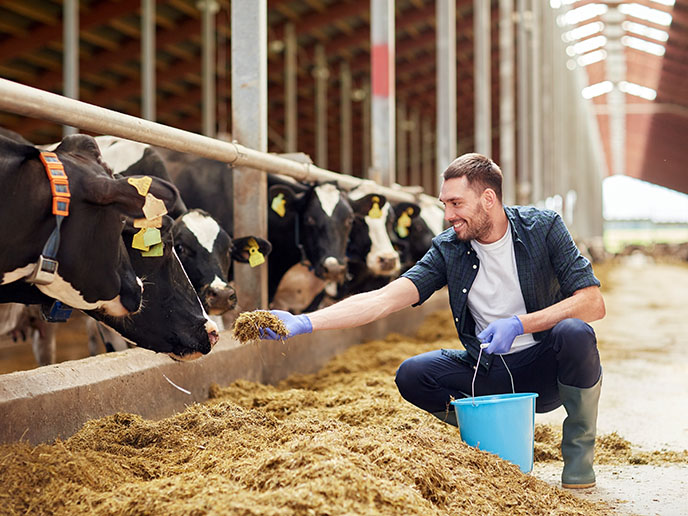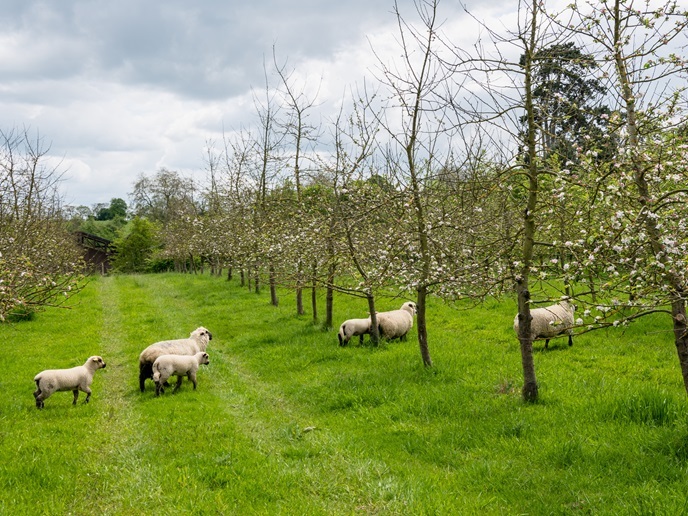Prebiotics delivers healthier livestock – without antibiotics
While antibiotics have long been used to treat illnesses in livestock, concerted efforts have been made in recent years to limit their application. This is because antibiotic overuse has led to microbial resistance(opens in new window), making future infections harder to treat. The concern for humans here is the potential transfer of antibiotic-resistant bacteria – and thus illnesses – from contaminated water and soil. Antibiotic residues can also be found in the meat, eggs and milk of treated animals.
Prebiotics to boost ‘good’ gut bacteria
RUMIC project coordinator Greta Reintjes(opens in new window) from the University of Bremen(opens in new window) in Germany was interested in investigating new ways of maintaining livestock health. Instead of treating cattle with drugs once they fell ill, she wanted to see the extent to which feeding them prebiotics could help boost the ‘good’ bacteria in their gut microbiome (the collection of microbes naturally living in our bodies). By modulating the gut microbiome, prebiotics – such as brewer’s yeast – can improve metabolism, mitigate pathogens and enhance overall animal health. In this way, infections can be avoided, and the need for antibiotics reduced. “I work on the microbial side of things, and my focus was on developing a method to track how sugars are processed by microbes in the gut,” Reintjes explains. “This is important, because prebiotics are often complex sugars. If we can discover how prebiotics reach the gut, which microbes processed them, and how they can increase natural health and defence systems, then there might not be any need for antibiotics at all.” For the RUMIC project – supported by the Marie Skłodowska-Curie Actions(opens in new window) programme – Reintjes partnered with the lab of researcher Wade Abbott from Agriculture and Agri-Food Canada(opens in new window), a government body with extensive research facilities. The collaboration enabled Reintjes to test her method both in livestock and in laboratory settings. “We used simulated techniques, where possible, in order to reduce the stress on animals as much as possible,” she adds. By combining live-cell imaging with analytical chemistry and bioinformatics, Reintjes was able to analyse the effect of prebiotics on cattle and their microbiomes.
Evidence of prebiotic benefits
“With our methodology, we were able to track how prebiotics are taken up by the natural microbiome and identify specific microorganisms that responded positively,” says Reintjes. “We were also able to identify prebiotic sugars that could be easily sourced from existing waste streams – brewer’s yeast, for example.” Reintjes also identified complex sugars extracted from seaweeds as a potential future source of animal feed prebiotics. “The aim of this project was always to combine microbiological methodologies and analysis, with agriculture inputs,” she notes. “We wanted to be able to bring new information to agriculture, by providing evidence of the benefits of including prebiotics in feed instead of antimicrobials.”
Creating value from existing waste streams
Reintjes hopes that the success of the project will encourage farmers to diversify cattle diets and use prebiotics for the health of the animals and create value from existing waste streams from industries such as brewing and winemaking. New markets for seaweed-sourced complex sugars could also be created, especially in coastal areas that have long incorporated seaweed into feed. “Using locally sourced algae is great, because there is no need for additional land use, or harvesting a crop that would have been destined for human consumption,” says Reintjes. “Our next step is to trial seaweed in feed, to see if cows like the taste. You’d be surprised at how picky cows can be!”







